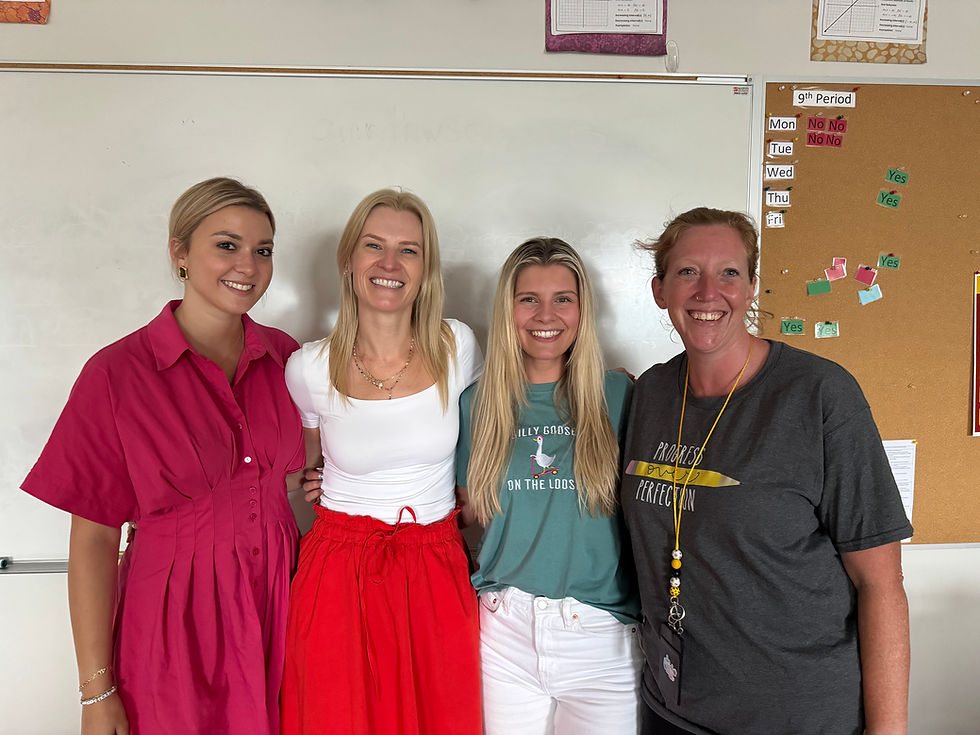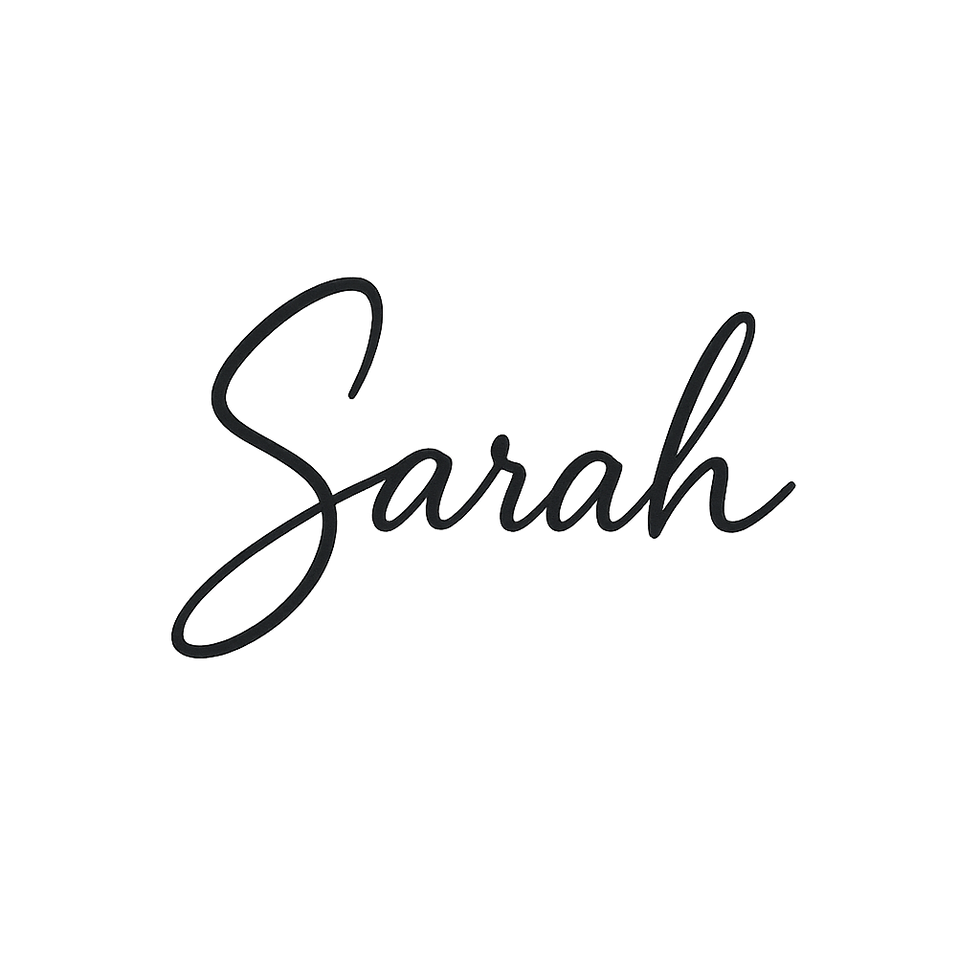More than Just Summer School: How a Village Helped Struggling Readers Rise
- DocHolbrook

- 2 days ago
- 6 min read
When Schools Unite Around Literacy: A Summer of Growth

Launching the KHS Summer Reading Academy
This summer, we set out to design a summer literacy experience for our most struggling readers—students entering 9th grade who had not yet achieved foundational reading proficiency. Many of these students had missed out on explicit phonics instruction during the balanced literacy years and had their learning further disrupted by the COVID-19 pandemic. With strong support from SUNY New Paltz and the dedication of Kingston teachers, we launched the KHS Summer Reading Academy, an ambitious, collaborative effort to give students the tools and time they needed to catch up. What happened over the following four weeks far exceeded our expectations. This pilot program brought together Kingston teachers and SUNY New Paltz literacy students in a powerful example of school-university collaboration.
Why We Can’t Just Push Struggling Readers Along
Far too often, older students who struggle with reading are quietly passed along, their deficits masked by coping strategies or overlooked due to pressures of passing classes and high school graduation requirements. But without direct intervention, these gaps don’t shrink, they widen. As students move up through the grades, the texts become more complex, and the demands on their reading skills increase. The cost of inaction is high: disengagement, low confidence, and limited access to academic and career opportunities.
The School-to-Prison Pipeline and the Role of Reading Instruction
There is a well-documented link between illiteracy and incarceration, often referred to as the school-to-prison pipeline. Students who cannot read proficiently by the third grade are significantly more likely to drop out of school, and those who drop out are far more likely to become involved with the criminal justice system. Reading is foundational not just for academic success, but for civic and economic participation. When schools fail to provide effective, evidence-based reading instruction, particularly to those most at risk, they risk perpetuating cycles of poverty, marginalization, and incarceration. The work of programs like the KHS Summer Reading Academy helps disrupt that pipeline by ensuring students are not left behind simply because they were never taught how to read.
Rethinking Summer School
Summer school is often viewed through a punitive lens, a consequence for students who failed during the year, or worse, a threat when students misbehave. But what if we reimagined it entirely? Instead of being a last resort, summer can be a critical window of opportunity. One to two months of additional instruction can make a tremendous difference for students who need more time and targeted support to master essential skills.
By reframing summer learning as a proactive, enriching, and personalized experience, we give students not just more time, but better time, time to close gaps, build confidence, and experience academic success. Programs like the KHS Summer Reading Academy demonstrate that summer school can be a catalyst for transformation, not a punishment for past performance.
Identifying Student Needs
Students were selected using multiple measures, including iReady diagnostics, oral reading fluency scores, and Words Their Way spelling inventories. The data indicated that many students were reading at least three grade levels below proficiency and needed focused support in foundational reading skills.
What Worked: Targeted Instruction with Real Results
Students received structured and evidence-based instruction tailored to meet them where they were and move them forward.
Explicit Phonics Instruction: Using Phonics for Reading by Curriculum Associates, students engaged in systematic, targeted instruction that focused on decoding and fluency.
The Writing Revolution: Students received explicit instruction on sentence-level writing routines to gain control of language and build confidence in expressing their thoughts.
Engaging, Grade-Level Texts: With texts like Sandra Cisneros' "Dear Daughter" and Kobe Bryant’s "Dear Basketball," students connected emotionally and intellectually, improving comprehension and critical thinking skills.
Measuring Progress: More Than Just Numbers
Research suggests that typical eighth-grade students grow in fluency at a rate of approximately 0.65 words correct per minute (WCPM) each week. With a stretch goal of 1 WCPM per week, students in the academy exceeded expectations—averaging 3.5 WCPM weekly and 15 WCPM overall. These results underscore the value of using curriculum-based measures (CBMs) like WCPM to track meaningful growth in decoding and automaticity.
Gains in Reading Comprehension
In addition to fluency gains, many students showed marked improvement in reading comprehension, as evidenced by their performance on the DIBELS MAZE assessment. The data was matched by equally powerful anecdotal feedback from participants.
Reflections From the Field
Student Voices:
"I really like having two teachers every day."
"I am very happy because I learned more English."
SUNY Literacy Candidates:
"It was great having direct access to a supervisor. I learned more in person than I would have online."
"It was very helpful to learn from experienced teachers."
"I think I learned more in the first week than I did in my first two years of teaching."
KCSD Teachers:
"It was wonderful to see their progress in real time."
"It was nice to focus on just reading."
"I really liked working with and mentoring the SUNY students."
"It was rewarding to see the students’ pride in their own growth."
The Impact of Explicit, Systematic Instruction
Many of the students who joined the KHS Summer Reading Academy entered high school still struggling with foundational reading and writing skills. These students were in elementary school during the height of balanced literacy—a time when explicit and systematic phonics instruction was often absent. Their early years were further disrupted by the COVID-19 pandemic, a reality that compounded learning gaps and limited consistent access to high-quality instruction. Shanahan has noted in his blog, the effects of COVID on literacy achievement are especially pronounced among older students who are now in middle and high school, making intervention efforts all the more critical.
Some students had even been casually labeled as “probably dyslexic” due to the severity of their reading struggles. But what we witnessed this summer tells a different story. Within just a month, students made measurable progress—both in fluency and comprehension. The rapid gains we observed suggest that these students were not necessarily dyslexic, but rather instructional casualties: students who were never explicitly taught to read using research-aligned methods.
Our use of curriculum-based measures (CBMs) like WCPM helped students track their own growth in real time. After just a few weeks, students could see their fluency scores rising, proof that their hard work was paying off. The effect on morale was immediate: big smiles, bursts of pride, and a renewed belief that they could learn to read.
These students know they struggle. Many may have internalized the belief that reading simply wasn't something they could ever do well. But this summer, they gained more than just improved skills, they gained hope. They learned that they can learn to read. And that realization might be the most powerful outcome of all.
The Power of Collaboration
The success of the KHS Summer Reading Academy underscores a key truth: literacy growth requires collective effort. Collaboration among experienced teachers, early-career educators, and university partners created a rich, supportive environment for both students and adults to grow.
This wasn’t just a summer program—it was a model of what’s possible when schools and universities work together to support struggling readers.
A Commitment to Educational Equity
Reading is not a privilege—it’s a fundamental right. Programs like this bring us closer to making that right accessible to all students, regardless of their starting point. The KHS Summer Reading Academy stands as a testament to what is possible through shared vision, targeted instruction, and a belief in every child’s ability to grow.
This is what it looks like when a village comes together to teach children to read.
See you next Sunday!

Want articles like this sent straight to your inbox? Click out icon below to join our mailing list!
References
Curriculum Associates. (n.d.). Phonics for reading. https://www.curriculumassociates.com
Shanahan, T. (2023, July 30). Why older students are struggling with reading. Shanahan on Literacy. https://www.shanahanonliteracy.com/blog/why-older-students-are-struggling-with-reading
Torgesen, J. K. (2005). Preventing early reading failure—and its devastating downward spiral. American Educator, 29(2), 6–19.
The Writing Revolution. (n.d.). Our method. https://www.thewritingrevolution.org/method/
National Institute of Justice. (2014). The school-to-prison pipeline. https://nij.ojp.gov/topics/articles/school-prison-pipeline
University of Oregon. (n.d.). DIBELS MAZE. https://dibels.uoregon.edu
Hasbrouck, J. E., & Tindal, G. (2006). Oral reading fluency norms: A valuable assessment tool for reading teachers. The Reading Teacher, 59(7), 636–644.





Comments